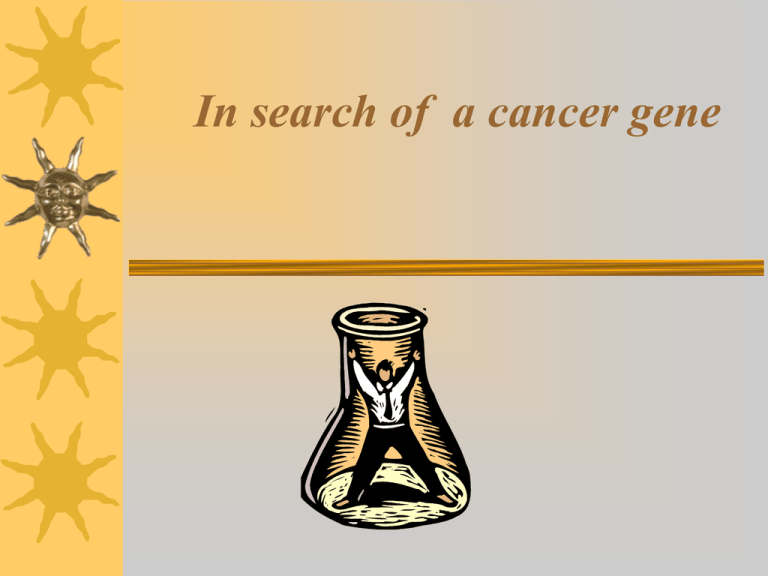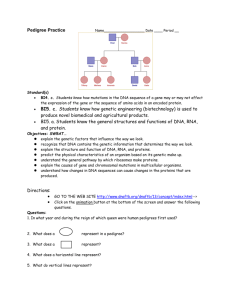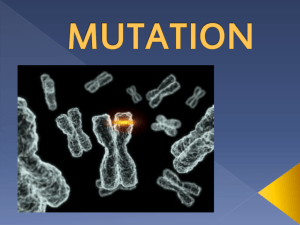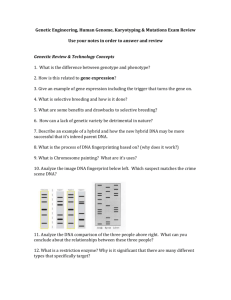Cancer Gene Lab
advertisement

In search of a cancer gene In search of a cancer gene You will search for a gene by Pedigree Analysis Gel electrophoresis Sequencing Data Pedigree of “Valerie’s” family (3-130) Label Photo with typed figure legend and data interpretation ID “children” that carry mutation from DNA sequences Hereditary versus Somatic Mutations Germline Somatic Some well known germline mutations that result in cancer are: Li-Fraumeni Syndrome What does the pedigree of a LiFraumeni patient look like? A sarcoma patient is included At least two immediate relative with other cancers before the age 45 As well as multiple cancers in other family members Your lab manual provides a typical LF pedigree Which gene is involved in the Li-Fraumeni syndrome? The p53 gene F.P. Li, J.F. Freemeni, Jr.: Soft-tissue sarcomas, breast cancer and other neoplasm's: A familial syndrome? Annals of Internal Medicine, Philadelphia, October 1969, 71 (4): 747-752. What are some characteristics of p53? “p” arm of chromosome 17 nuclear phosphoprotein transcription factor tumor suppressor gene “hot spots” – Exons 5-8 are hot spots P53 Mutations Point Mutations Mutation alters digest pattern Identifying Li-Fraumeni in three ways: Family History: leads to a pedigree Germline mutations: restriction digests, followed by gel electrophoresis Hot Spots: sequencing Let’s look at these steps individually… The first step will be assign a pedigree to family containing patient “Valerie” Use the appropriate pedigree symbols as Outlined on 3-120. For example: Female free of cancer Male free of cancer The second step is to identify patterns of the restriction digest for patient Valerie. Step 2: Restriction Digest Analysis of Patient: “Valerie” Ladder Wild Type DNA (gold standard) Patient Peripheral Blood WBC DNA Patient Tumor DNA Patient Non-Tumor Breast Tissue Step 3: Identify the “hot spot” in Valerie’s children. Was this mutation inherited by her children? Read the sequences of the 5 films – – – – – Film 1 Justin age 16 Film 2 Sheila age 14 Film 3 Robert age 10 Film 4 Angela age 8 Film 5 Anthony age 6 Summary: Today you will… perform gel electrophoresis Read sequencing films Practice a pedigree for Valerie’s family Points on Gel Electrophoresis 4-5 groups Each group should pick up 5 samples labeled A, B, C, D and E Load 20 ul – – – – – A: Ladder B: wild type DNA “gold standard” (non-patient DNA) C: Patient Peripheral Blood DNA D Patient Tumor DNA E Patient Non-tumor Breast Tissue Gel Electrophoresis Heat samples 2 min. at 65 C in water bath in floating racks Add 20 ul per well Run for 75-125 volts, 20-25 minutes Photograph results What you hand in: Photograph with a legend and very brief explanation of the result Family pedigree Sequence of children and identify: – Who has a mutation – Where the mutation is (simply highlight with marker)







